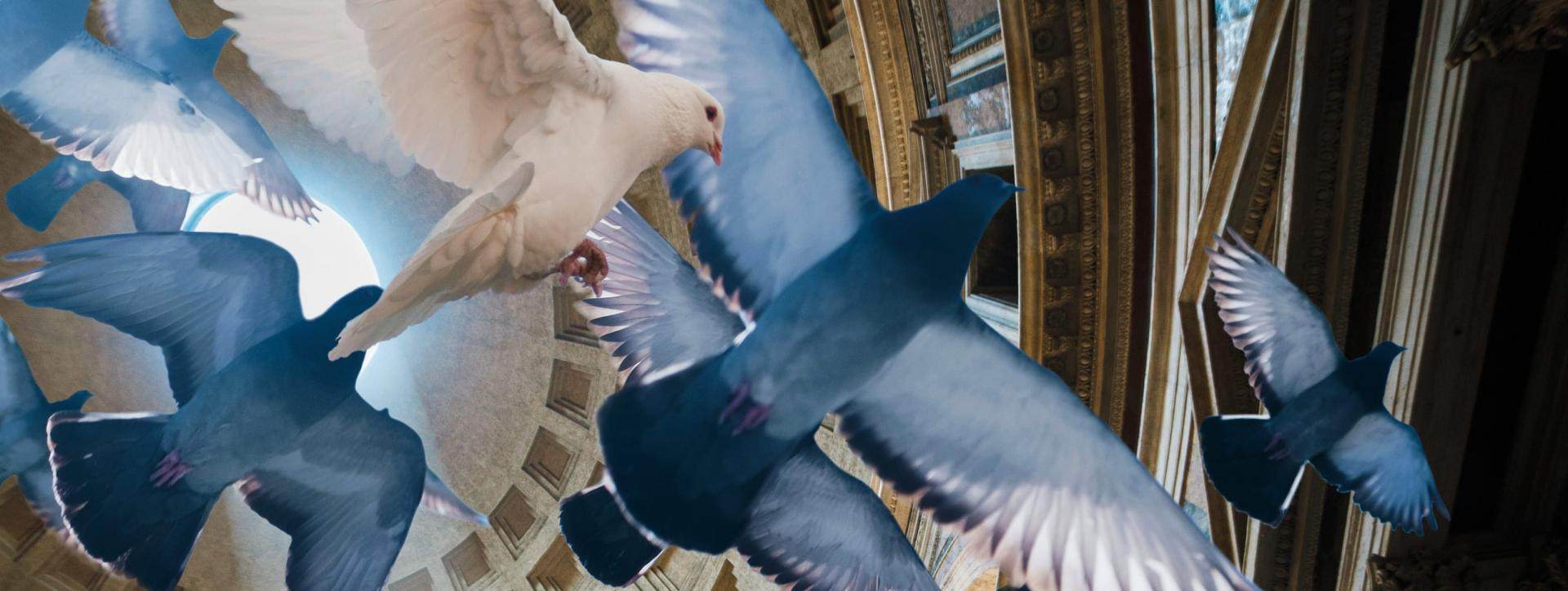The Clemency of Titus
March 2026 | ||||||
|---|---|---|---|---|---|---|
Mo | Tu | We | Th | Fr | Sa | Su |
The Clemency of Titus (La Clemenza di Tito) – Wolfgang Amadeus Mozart | Opera
Opera seria in two acts
Libretto by Pietro Metastasio
adapted by Caterino Tommaso Mazzolà
Act 1 – approx. 55 minutes
Intermission – approx. 25 minutes
Act 2 – approx. 65 minutes
Synopsis
Place and time: Ancient Rome, in the year 79.
Act 1
Vitellia, daughter of the late emperor Vitellius (who had been deposed by Tito's father Vespasian), wants revenge against Tito. She stirs up Tito's vacillating friend Sesto, who is in love with her, to act against him (duet "Come ti piace, imponi"). But when she hears word that Tito has sent Berenice of Cilicia, of whom she was jealous, back to Jerusalem, Vitellia tells Sesto to delay carrying out her wishes, hoping Tito will choose her (Vitellia) as his empress (aria "Deh, se piacer mi vuoi").
Tito, however, decides to choose Sesto's sister Servilia to be his empress, and orders Annio (Sesto's friend) to bear the message to Servilia (aria "Del più sublime soglio"). Since Annio and Servilia, unbeknownst to Tito, are in love, this news is very unwelcome to both (duet "Ah, perdona al primo affetto"). Servilia decides to tell Tito the truth but also says that if Tito still insists on marrying her, she will obey. Tito thanks the gods for Servilia's truthfulness, and immediately forswears the idea of coming between her and Annio (aria "Ah, se fosse intorno al trono").
In the meantime, however, Vitellia has heard the news about Tito's interest in Servilia and is again boiling with jealousy. She urges Sesto to assassinate Tito. He agrees, singing one of the opera's most famous arias ("Parto, parto, ma tu, ben mio" with basset clarinet obbligato). Almost as soon as he leaves, Annio and the guard Publio arrive to escort Vitellia to Tito, who has now chosen her as his empress. She is filled with feelings of guilt and worry over what she has sent Sesto to do.
Sesto, meanwhile, is at the Capitol wrestling with his conscience (recitativo "Oh Dei, che smania è questa"), as he and his accomplices set about burning it down. The other characters (except Tito) enter severally and react with horror to the burning Capitol. Sesto reenters and announces that he saw Tito slain, but Vitellia stops him from incriminating himself as the assassin. The others lament Tito in a slow, mournful conclusion to act one.
Act 2
The act begins with Annio telling Sesto that Emperor Tito is in fact alive and has just been seen; in the smoke and chaos, Sesto had mistaken someone else for Tito. Sesto wants to leave Rome, but Annio persuades him not to (aria "Torna di Tito a lato"). Soon Publio arrives to arrest Sesto, bearing the news that it was one of Sesto's co-conspirators who dressed himself in Tito's robes and was stabbed, though not mortally, by Sesto. The Senate tries Sesto as Tito waits impatiently, sure that his friend will be exonerated; Publio expresses his doubts (aria "Tardi s'avvede d'un tradimento") and leaves for the Senate. Annio begs Tito to show clemency towards his friend (aria "Tu fosti tradito"). Publio returns and announces that Sesto has been found guilty and that his death sentence only awaits Tito's signature.
Attempting to obtain further details about the plot, the anguished Tito decides to send for Sesto first. Sesto takes all the guilt on himself and says he deserves death (rondo "Deh, per questo istante solo"), so Tito tells him he shall have it and sends him away. But after an extended inner struggle, Tito tears up the execution warrant for Sesto. He determines that, if the world will accuse him (Tito) of anything, it should charge him with showing too much mercy, rather than with having a vengeful heart (aria "Se all'impero").
Vitellia at this time is wracked with guilt, but Servilia warns her that tears alone will not save Sesto (aria "S'altro che lagrime"). Vitellia finally decides to confess all to Tito, giving up her hopes of empire (rondo "Non più di fiori" with basset horn obbligato). In the amphitheatre, the condemned (including Sesto) are waiting to be thrown to the wild beasts. Tito is about to show mercy, when Vitellia offers her confession as the instigator of Sesto's plot. Although shocked, the emperor includes her in the general clemency he offers (recitativo accompagnato "Ma che giorno è mai questo?"). The opera concludes with all the subjects praising the extreme generosity of Tito; he then asks that the gods cut short his days, should he ever cease to care for the good of Rome.
Program and cast
Titus - Katleho Mokhoabane
Vitellia - Hanna-Elisabeth Müller
Servilia - Florina Ilie
Sesto - Emily D'Angelo
Annio - Alma Neuhaus
Publio - Matheus França
Musical Direction - Pablo Heras-Casado
Direction, Choreography & Set Design - Jan Lauwers
Associate Director - Emily Hehl
Costumes - Lot Lemm
Lighting - Ken Hioco
Co-Choreography - Paul Blackman
Dramaturgy - Elke Janssens
Vienna State Opera
Public Transport
Subway lines: U1, U2, U4
Trams: 1, 2, D, J, 62, 65
Buses: 59A
Local Railway: Badner Bahn
Stops: Karlsplatz / Opera
Taxi stands are available nearby.
Parking
Parking is only € 6, - for eight hours!
The Wiener Staatsoper and the ÖPARK Kärntner Ring Garage on Mahlerstraße 8, under the “Ringstraßengalerien”, offer the patrons of the Vienna State Opera a new, reduced parking fee. You can park in the Kärntner Ring Garage for up to 8 hours and pay only a flat fee of € 6, -. Just validate your ticket at one of the discount machines inside the Wiener Staatsoper. The normal rate will be charged for parking time greater than 8 hours. The validation machines can be found at the following coat checks: Operngasse, Herbert von Karajan-Platz, and the right and left and balcony galleries.
Important: In order to get the discount, please draw a ticket and do not use your credit card when entering the garage!
After devaluing your ticket in the Wiener Staatsoper you can pay comfortably by credit card or cash at the vending machines.
The machines accept coins and bills up to 50.- Euro. Parking time longer than 8 hours will be charged at the normal rate.
History
The structure of the opera house was planned by the Viennese architect August Sicard von Sicardsburg, while the inside was designed by interior decorator Eduard van der Nüll. It was also impacted by other major artists such as Moritz von Schwind, who painted the frescoes in the foyer, and the famous "Zauberflöten" (“Magic Flute”) series of frescoes on the veranda. Neither of the architects survived to see the opening of ‘their’ opera house: the sensitive van der Nüll committed suicide, and his friend Sicardsburg died of a stroke soon afterwards.
On May 25, 1869, the opera house solemnly opened with Mozart's Don Giovanni in the presence of Emperor Franz Joseph and Empress Elisabeth.
The popularity of the building grew under the artistic influence of the first directors: Franz von Dingelstedt, Johann Herbeck, Franz Jauner, and Wilhelm Jahn. The Vienna opera experienced its first high point under the direction of Gustav Mahler. He completely transformed the outdated performance system, increased the precision and timing of the performances, and also utilized the experience of other noteworthy artists, such as Alfred Roller, for the formation of new stage aesthetics.
The years 1938 to 1945 were a dark chapter in the history of the opera house. Under the Nazis, many members of the house were driven out, pursued, and killed, and many works were not allowed to be played.
On March 12, 1945, the opera house was devastated during a bombing, but on May 1, 1945, the “State Opera in the Volksoper” opened with a performance of Mozart's THE MARRIAGE OF FIGARO. On October 6, 1945, the hastily restored “Theaters an der Wien” reopened with Beethoven's FIDELIO. For the next ten years the Vienna State Opera operated in two venues while the true headquarters was being rebuilt at a great expense.
The Secretary of State for Public Works, Julius Raab, announced on May 24, 1945, that reconstruction of the Vienna State Opera would begin immediately. Only the main facade, the grand staircase, and the Schwind Foyer had been spared from the bombs. On November 5, 1955, the Vienna State Opera reopened with a new auditorium and modernized technology. Under the direction of Karl Böhm, Beethoven’s FIDELIO was brilliantly performed, and the opening ceremonies were broadcast by Austrian television. The whole world understood that life was beginning again for this country that had just regained its independence.
Today, the Vienna State Opera is considered one of the most important opera houses in the world; in particular, it is the house with the largest repertoire. It has been under the direction of Dominique Meyer since September 1, 2010.

 EN
EN DE
DE IT
IT FR
FR ES
ES RU
RU JP
JP RO
RO
 Seating plan
Seating plan